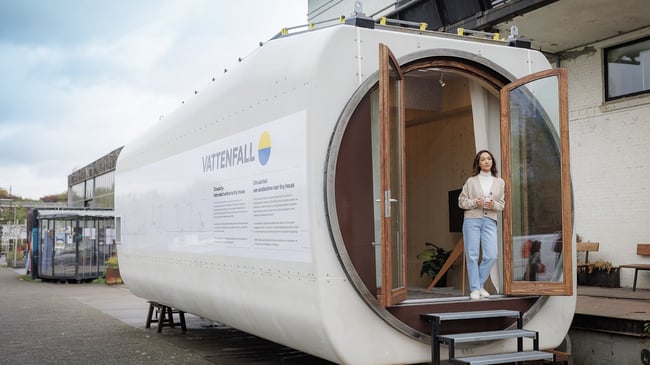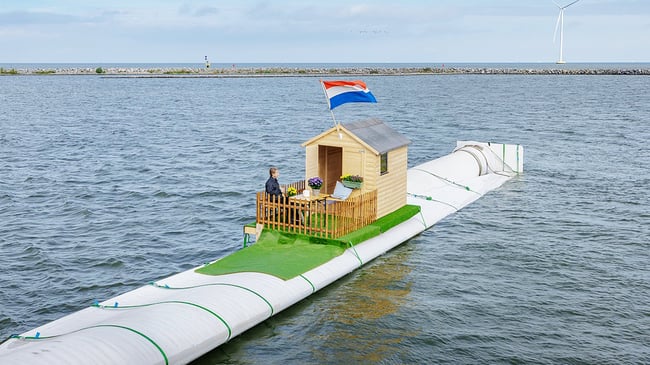2,516,349 views ![*quote*]
2,516,349 viewsAug 4, 2018
Die Erkenntnisse der Wissenschaft und Medizin sind ihnen offenbar egal: Impfgegner verbreiten Verschwörungsmythen und gehen regelmäßig mit ihren kruden Theorien auf die Straße. Auch schon vor der Corona-Pandemie. Mit ihren Horrorgeschichten halten sie immer mehr Eltern davon ab, ihre Kinder zu impfen.
[*/quote*]
Mehr:
https://www.youtube.com/watch?v=fu0y1eQl-GwInzwischen gibt es auch ein Transkript. Das muß selbstverständlich archiviert werden.




[*quote*]
Transcript
0:03 nürnberg vor wenigen wochen habe ich sie
0:05 mal fragen warum so hier demonstrieren
0:09 unsere serie
0:11 die unglaublich immer fragen warum sie
0:13 heute hier sind habe ich mir die ihnen
0:15 ein interview machen mein name ist man
0:16 da von spiegel tv
0:17 spiegel tv und nein danke und dann sitzt
0:21 ungemütlich wenn sie die kamera auf sie
0:29 sollen die kamera ausmachen da wird
0:31 nämlich ein fünftes die bohrtätigkeiten
0:33 weiß dass sie wissen haben machen nur so
0:36 gut im rathaus und brauche ich sie nicht
0:38 angehalten haben
0:42 was aussieht wie eine pg der
0:45 veranstaltung ist eine demo von im
0:47 kritikern der kampf richtet sich gegen
0:49 einen imaginären impfzwang gegen die
0:51 moderne medizin und gegen die presse
0:54 einmal kurz dazu auffordern bitte der
0:57 presse keine interviews zu geben
0:59 das machen wir weil wir gar nicht
1:01 angefragt worden sind auch wir auch
1:03 gefilmt werden darf dass sie keine
1:04 rechte übertragen bord sind und wir
1:07 möchten euch bitten keine interviews zu
1:09 geben
1:11 manche aktivist traut sich dann aber
1:13 doch mit kruden thesen aus der deckung
1:20 teilen positiv es gibt sogar im
1:24 gegenteil das negative effekte
1:26 überwiegen die bei den maßen von dasteht
1:29 dunkelziffer der impfgeschädigte
1:31 riesengroß etwas wie die pocken oder
1:34 polio ist ja ausgerottet wurden durch
1:36 impfen
1:38 ja na ja also ich weiß nicht ob sie
1:42 schon mal im internet recherchierte mir
1:43 die bomben was da wirklich abdallah ist
1:46 aber also ich bin überzeugt dass man
1:50 nicht ins zeug legen
1:52 ich möchte keine gifte in die arbeit
1:55 meines kindes oder in meine adern
1:56 gespritzt bekommen
1:58 glauben sie nicht dass sich nicht das
2:03 sehen alle die sich mit der materie
2:05 wirklich auskennen anders impfen
2:07 immunisiert und schützt vor schlimmen
2:09 krankheiten
2:10 alles andere sind für kinderärztin dr
2:12 teichmann hirngespinste verhalten von
2:20 den eltern und wir als kinder dazu sind
2:23 ganz unglücklich weil wir wissen wir
2:26 können wir es könnte anders sein impfen
2:29 zum beispiel gegen masern schützt nicht
2:31 nur einzelne sondern auch jene die aus
2:33 vorsichtsgründen nicht geimpft werden
2:35 können
2:35 ungeschützt sind die kinder weil sie
2:37 keine abwehrstoffe gegen diese
2:39 krankheiten selbst gebildet haben und
2:42 die mütterlichen schutzstoffe die über
2:44 die geburt da waren und die auch über
2:47 stillen noch übertragen werden dann
2:49 nicht mehr ausreichend sind für in sechs
2:51 bis sieben monate altes kind so dass die
2:53 zeit zwischen dem halben jahr und einem
2:57 jahr wo wir dann aktiv die immunantwort
2:59 bei dem kind aufbauen können und eine
3:02 gefährliche zeit fürs kind ist wie
3:04 gefährlich masern sein können zeigt der
3:07 schicksalsschlag der familie bartko
3:09 getroffen hat im alter von acht monaten
3:11 steckte sich ihr sohn josh cohen an
3:14 rund zehn jahre später löste das
3:16 masernvirus die krankheit ssp aus eine
3:20 unheilbare hirnhautentzündung die den
3:22 inzwischen 17-jährigen zum pflegefall
3:25 machte es begann mit krampfanfällen dann
3:28 fiel das sprachvermögen aus george cohen
3:30 ist ohne fremde hilfe komplett hilflos
3:45 dabei war schon ein ganz normaler junge
3:48 die achte klasse machte er noch zu ende
3:50 die neunte besuchte er nur noch wenige
3:52 wochen dann ging nichts mehr
3:55 freundin alexandra booms unterstützt die
3:58 familie hilft beim papierkram begleitet
4:00 bei arztbesuchen den physischen und
4:03 psychischen verfall des jungen hat sie
4:05 hautnah miterlebt die krankheit endet
4:07 fast immer tödlich
4:09 wir wissen nicht was kommt wir wissen
4:12 nicht was passiert wir wissen nicht wie
4:13 es weitergeht und nutzen jeden tag
4:18 wo er soviel ist schon ein großer masern
4:26 sind lebensgefährlich das erlebt der
4:29 leiter der leipziger kinder poliklinik
4:31 in seinem alltag eines von 1.700 kindern
4:35 die masern hatten erkrankt laut
4:37 statistik an ssp die masern infektion 14
4:42 oder ganz schweren depression des
4:44 immunsystems was für zwei drei jahre
4:46 anhält also auch bei anderen kindern
4:48 also auch gegenüber anderen erkrankungen
4:51 auswirkungen hat und dann kann es zu
4:53 einer enzephalitis kommen und im
4:54 schlimmsten fall auch zu dieser
4:56 sogenannten guten sklerosierende
4:57 panenzephalitis das ist eine schwere und
5:01 haut entzünden oder hirnentzündung die
5:04 immer zum tode führt ganzjährlich
5:06 patienten zugrunde deutschland im jahr
5:10 2018 impfgegner haben unsere
5:13 wohlstandsgesellschaft zum
5:14 immunologischen problemfall gemacht das
5:18 ist die verteilung masern auf der welt
5:21 vorkommen verschiedenen farben und grau
5:23 alles die länder die herr masern frei
5:26 sind schon seit einigen jahren
5:28 orange bedeutet hier weniger grün
5:31 häufige masernfälle
5:33 deutschland ist hier so mit den grünen
5:35 und sie sehen hier auch afrikanische
5:38 länder die ich sehr viel weniger masern
5:40 haben durch eine gute impfung
5:41 deutschland hat sein erstes ziel 2010
5:44 und das zweite ziel 2015 nicht erreicht
5:47 nämlich masern frei zu sein
5:48 maß an frei heißt dass wir eine
5:51 durchimpfungsrate von über 95 prozent
5:53 haben
5:53 das nächste ziel ist 2020 ich bin mal
5:57 gespannt ob wir es schaffen
5:58 wie gefährlich sich im fröhlichkeit
6:00 auswirkt wird am masern ausbruch vor
6:02 wenigen jahren in berlin deutlich
6:04 im oktober brachte ein asylbewerber aus
6:07 bosnien herzegowina die masern in die
6:09 hauptstadt
6:10 zunächst steckten sich nur migranten aus
6:12 seinem umfeld an
6:14 doch dann explodierte plötzlich die
6:16 fallzahlen unter den nicht geimpften
6:18 berlinern im januar schossen sie
6:20 regelrecht in die höhe
6:22 insgesamt erkrankten rund 1400 personen
6:25 ein kleiner junge starb
6:28 einer der prominentesten in skeptiker in
6:30 deutschland ist hans tolzin ein
6:32 gelernter molkereifachmann mit hang zum
6:34 theatralischen mein name ist hans holz
6:37 ich bin selbst ernannter medizin
6:39 journalist autor verleger haben ihre
6:42 bücher herausgegeben habe mich als laie
6:46 und papa mit dem thema beschäftigt vor
6:48 etlichen jahren und wollte es einfach
6:51 genau wissen und nicht nur behauptungen
6:55 von irgendjemanden einfach übernehmen
6:57 weil es ging ja um meine kinder
6:59 inzwischen betreibt er eine vielzahl von
7:01 seiten im netz
7:02 in der welt von herrn tolzin ist
7:05 homosexualität eine heilbare krankheit
7:07 wird die existenz von aids angezweifelt
7:10 und ebola ist eine erfindung der
7:12 industrie das heißt beide bei der
7:17 hypothese ist man man hat einfach die
7:20 bisherigen malariafälle oder die fälle
7:23 die man als malaria etikettiert hat
7:25 jetzt einfach mit ebola etikettiert
7:28 interviews gibt scharlatan tolzin
7:30 offenbar nur ausgewählten journalisten
7:32 anfragen von spiegel tv lehnt er ab
7:39 ich möchte von ihnen aufgenommen haben
7:46 das habe ich ihnen vorhin schon gesagt
7:48 sie machen die kamera auch noch andere
7:51 wahl hat sich die kamera
8:05 gebremst wird der anti im agitator von
8:08 unbeteiligten passanten
8:16 sie haben als gedacht
8:25 die gruppe im teddy kennt die
8:27 aggressivität der impfgegner
8:29 darum bleiben die aktivisten darunter
8:31 ärzte und wissenschaftler lieber anonym
8:34 gegen falschmeldungen stellen sie
8:36 medizinische studien unsinn konnten sie
8:39 mit fakten die dreistesten lügen werden
8:42 mit einer spende bestraft die in ihren
8:44 namen an unicef geht das erste argument
8:48 wenn wir irgendwo pro impfung
8:49 kommentieren dass du bist doch ein fake
8:52 gekaufte bis von der pharma mafia
8:53 gekauft du und dein felge konto traust
8:56 dich an nicht mehr nein ich traue ich
8:58 mich ich trau mich nicht meine
8:59 persönlichen daten öffentlich zugänglich
9:02 zu machen weil ich angst davor habe dass
9:05 ich angegriffen werde dass mir
9:07 persönlich geschadet wird auch
9:10 verschwörer tolzin haben die impfgegner
9:12 gegner schon lange im blick sehr toll
9:16 sind ist ein sehr gefährlicher mensch
9:18 weil er es schafft mit
9:21 pseudowissenschaftlichen theorien
9:23 menschen zu verunsichern
9:25 er lässt fake news oder alternativ
9:31 fakten aussehen wie tatsächliche
9:33 wissenschaftliche ergebnisse und
9:35 beeinflusst so quasi ganze generation
9:37 junger mütter das internet nutzen
9:41 impfgegner gezielt um zu verunsichern
9:43 wissenschaftliche fakten sind oft nur
9:46 einen mausklick vom blanken unsinn
9:47 entfernt und manchmal scheint es als
9:50 würde der nonsens die oberhand gewinnen
9:57 auch der psychiater jan oder aus
9:59 versucht aufzuklären
10:01 wie entstand die anti impft bewegung
10:05 wenn wir in diesen eingeben dann ist
10:08 erst mal impfen nein danke in pro und
10:10 contra ja oder nein und das ist aber
10:15 hier schon hier sind man einmal ein
10:17 zitat von rudolf steiner
10:18 materialistische mediziner werden den
10:20 kindern mit impfstoffen die seele
10:22 austreiben man impft gegen die anlage
10:25 zur spiritualität
10:26 das ist im grunde das anthroposophische
10:29 problemen mit impfen und darunter die
10:31 frau blavatski die erfinderin der
10:34 modernen esoterik impfen ist eine
10:36 illusion der schulmedizin und als legale
10:38 quacksalberei zu entlarven
10:41 ansonsten sind die feindbilder klar die
10:43 weltgesundheitsorganisation die
10:45 bundesregierung die pharmaindustrie und
10:47 die bösen medien
10:49 die parallele zwischen vielen bewegungen
10:51 die wir jetzt sehen ist ist ein
10:53 vertrauensverlust in die demokratischen
10:55 institutionen und eben die überzeugung
10:59 in einer in einer in einem ungerechten
11:04 oder diktatorischen system zu leben und
11:05 sich dagegen zu wehren und eben auf der
11:08 seite der guten zu stehen und da sind
11:10 dann auch alle mittel recht
11:14 wie jede bewegung haben auch die impf
11:16 skeptiker ihren sound in nürnberg
11:19 lieferten die combo die bandbreite
11:22 jetzt wissen wir voll auf die länder
11:25 pochen sie drauf und alle drücken denn
11:27 sie haben die presse gekauft hätte
11:29 glaubt ihnen nicht ein wort das sie
11:31 reden sie vergiften eure kinder machten
11:33 damit noch moneten bitte bitte im steam
11:37 nicht aufrichtig nicht dass ich mich mit
11:42 dieser zeitung
11:44 [Musik]
11:45 die musiker liefern zu allerlei
11:47 verschwörungstheorien die melodie die
11:50 themenvielfalt ist groß hier zweifelt
11:53 man beispielsweise am elften september
11:58 [Musik]
12:01 für die eigenen leute getötet
12:03 [Musik]
12:05 [Applaus]
12:08 auf der demo der impf skeptiker gibt und
12:11 man marcel wojnarowicz den einpeitscher
12:19 letztlich darauf hinausläuft dass man in
12:23 einem negativen nicht dargestellt werden
12:25 ansonsten sieht man sich in einer reihe
12:27 mit freiheitskämpfern und dissidenten
12:30 immer wenn echte dissidenten die man in
12:32 china ganz stark verteidigt sowie in
12:34 russland aber wenn es dissidenten diesen
12:36 dann gibt menschen die etwas anders
12:38 sehen dann rollt die große propaganda
12:40 maschine und hat dann heißt es zum
12:42 auftakt zu was sie sind gefährlich
12:44 sie laufen wie friedliche familien durch
12:47 die straße aber ist es nicht so dass die
12:49 gefahr von diesen nicht endenden eltern
12:51 viel größer ist als wir alle drauf was
12:55 daran lustig sein soll können betroffene
12:58 die familie putin nicht verstehen so
13:00 georges tron wird wohl nie wieder gesund
13:04 [Musik]
13:05 ich wünsche es niemand von den
13:08 impfgegnern dass sein kind sohn die
13:11 krankheit bekommt wirklich nicht aber
13:13 sie sollten auch mal diese konsequenz
13:16 sehen die impfgegner hervorrufen was er
13:20 andere familien anrichten
13:22 an den spätfolgen einer krankheit zu
13:25 sterben die längst hätte ausgerottet
13:27 sein können dass es keine verschwörung
13:29 sondern wahnsinn
[*/quote*]




 Der Rat und der Maschinenraum entscheiden. Wir sind nur zu Gast hier.
Der Rat und der Maschinenraum entscheiden. Wir sind nur zu Gast hier. 



